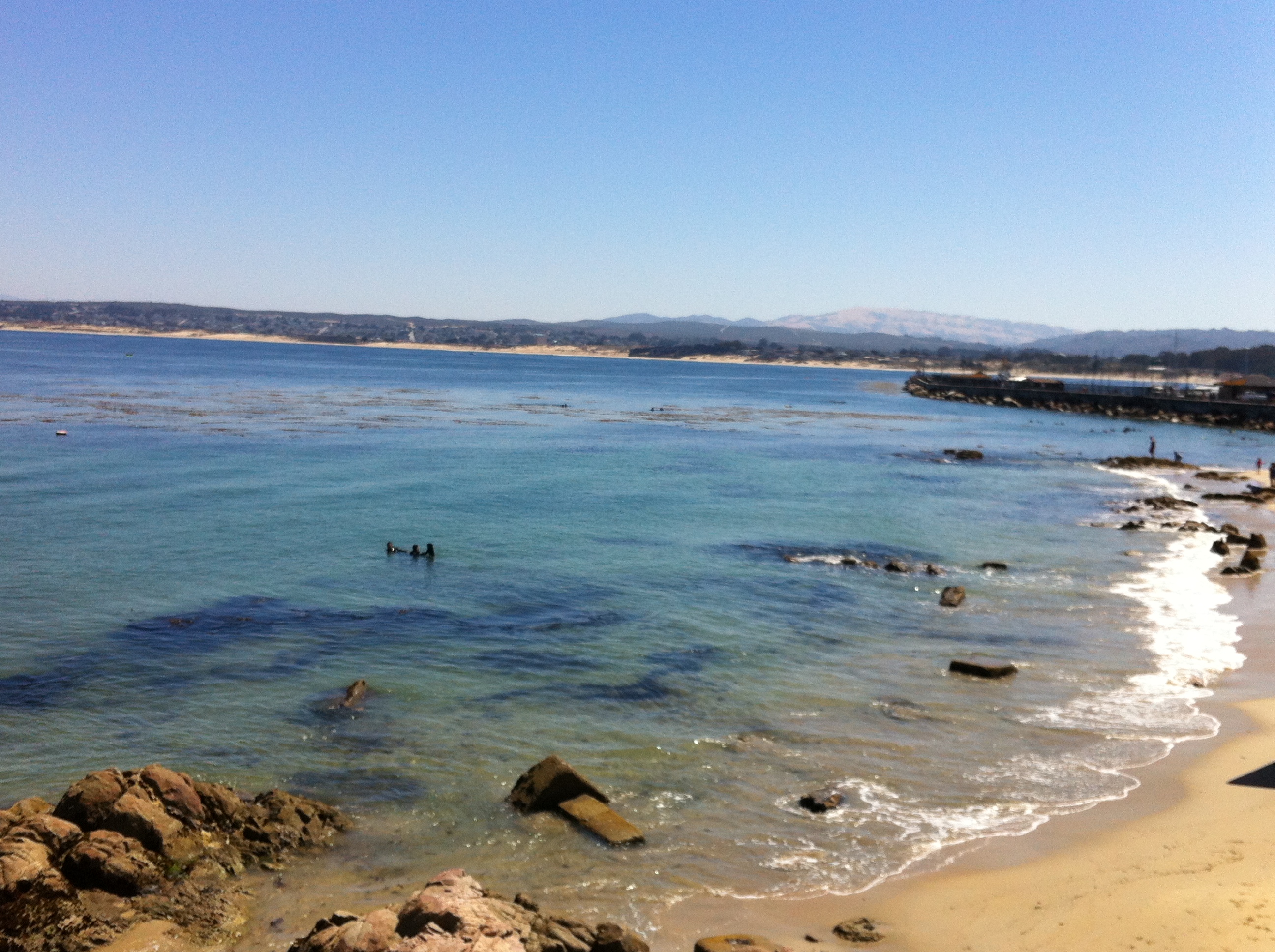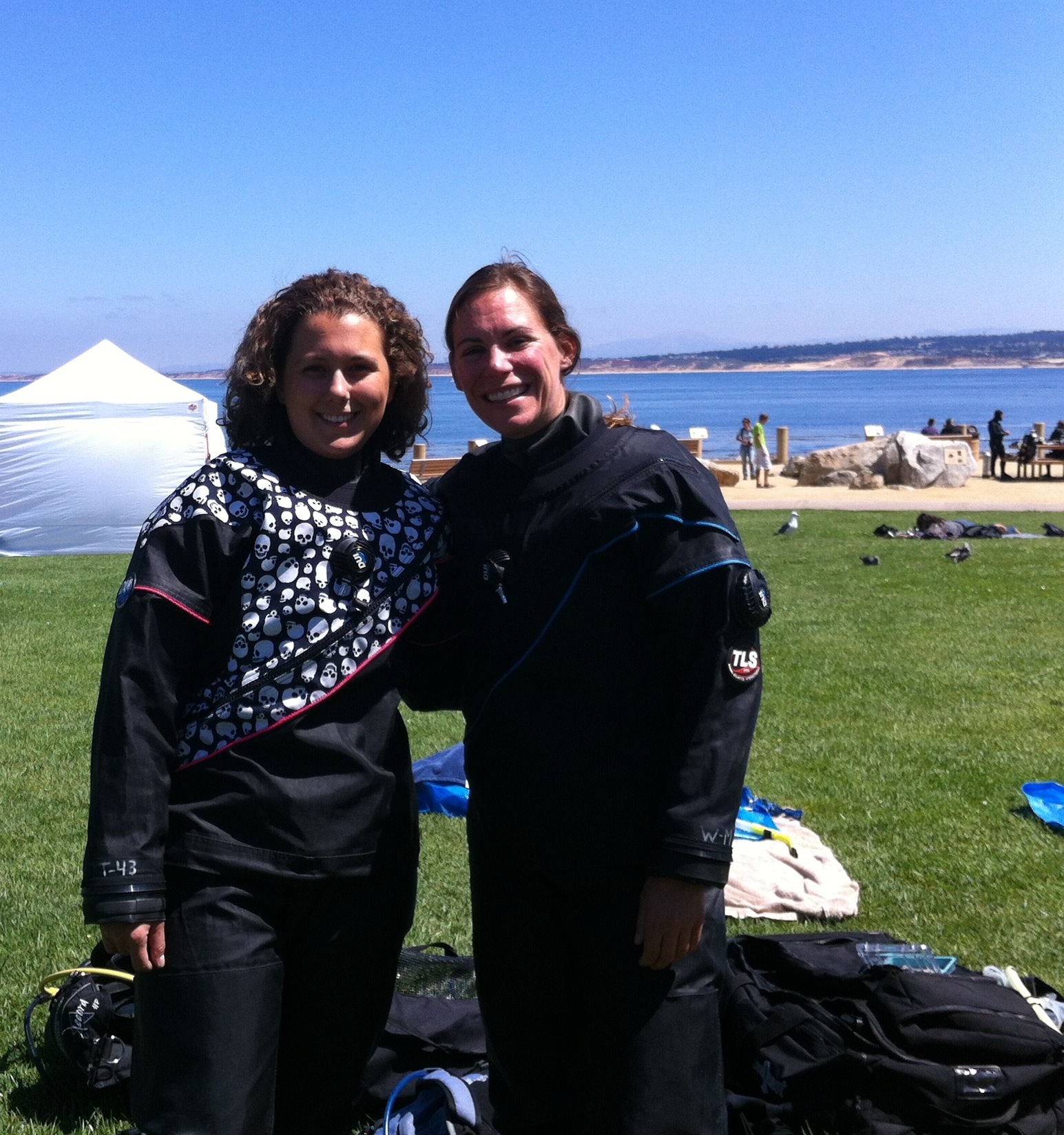By Michelle Marraffini, Invertebrate Zoology and Molecular Ecology Lab

Scuba diving on the central coast means you get to see amazing kelp forests and underwater geological formations but it also often means you are getting in the sometimes frigid waters of Monterey Bay. At depth, the water can get very cold, I experienced a dive at Big Creek, Big Sur where the temperate was only 8 Celsius (~46 degrees Fahrenheit)! At that temperature my wimpy 7 millimeters feels like wearing shorts in a blizzard and gets even thinner as the pressure compresses all the neoprene bubbles in my suit. Over the years I have seen many other divers in thicker wetsuits (up to 20 millimeters on their core) and dry suits. That is right scuba diving without getting wet. When a company that makes dry suits (DUI) offered a demo day at a local dive spot my labmate Pamela and I leaped at a chance to jump in the water without getting wet.
Dry suits allow you to stay dry with the help of tight seals around your wrists and neck. However most of these suits do not include a layer of insulation, enter an under layer of fleece that reminded me of wearing footie pajamas. The demo day started with us spending what seemed like hours getting a new hose for our regulator, being fitted into our dry suit pajamas, and then finally getting all of our seals fitted just right. Finally we were ready to get in the water, after posing for a few pictures.

The dive began with simple instructions about how to use our dry suit as a buoyancy compensator and a few safety tips. Then in the company of a dry suit instructor we headed off into the water. The dive was great, clear water and I wasn't cold, and we even saw an octopus. Even though I had a great time I do not think I would buy a new dry suit anytime soon but I did enjoy getting to try new diving equipment. For more on DUI dry suits check out http://www.dui-online.com/ or your local DUI dealer.


